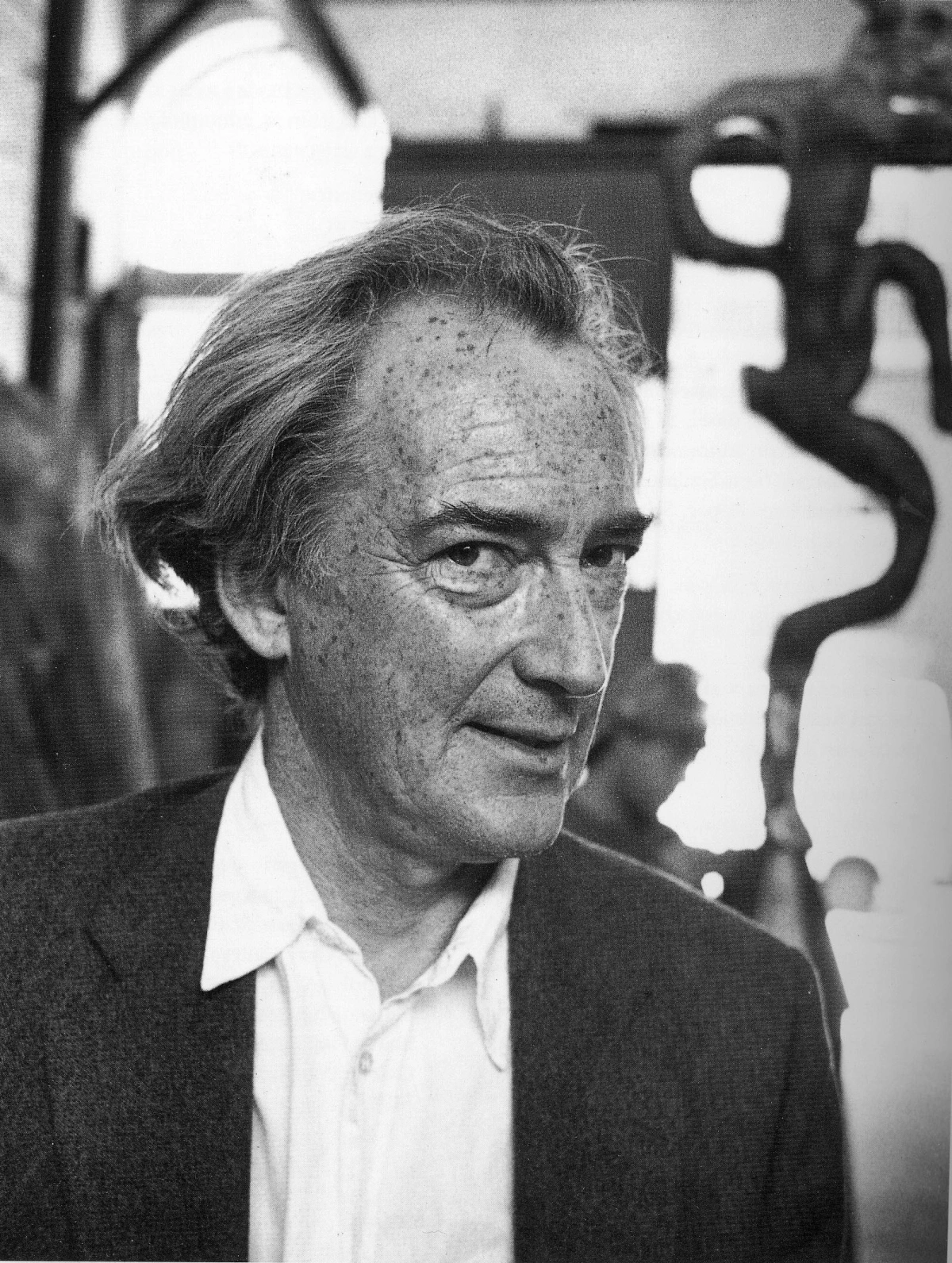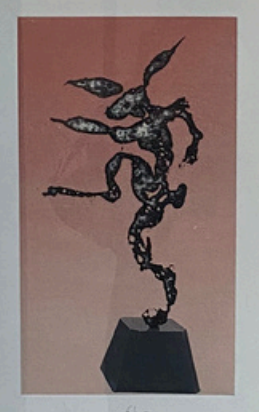Barry Flanagan OBE RA
Born: January 11, 1941, Prestatyn, Wales
Died: August 31, 2009, Ibiza, Spain
Nationality: British
Field: Sculpture, Public Art
Education: Birmingham College of Art (1957–1958), Saint Martin’s School of Art, London (1964–1966)
Early Life and Education
Barry Flanagan was born in Prestatyn, a small town in North Wales. From an early age, he demonstrated a passion for art and creativity. After spending some time at the Birmingham College of Art, he transferred to Saint Martin’s School of Art in London, where he studied from 1964 to 1966. During his education, he was exposed to the avant-garde and experimental movements of the time, which would influence his later work.
The Early Years and Experimentation
Flanagan’s artistic career began in the 1960s, during which he was part of the post-minimalist movement. Early in his career, he experimented with materials that were unconventional in the world of sculpture, including sand, hessian, and rope. His use of these materials was a radical break from the traditional methods of sculpture, and this experimentation set the stage for his later iconic works. His early works reflected his desire to challenge the boundaries of sculpture, creating pieces that were both conceptual and highly tactile.
Flanagan was particularly influenced by process art, where the act of making was as important as the final product. His works from this period include assemblages and environmental installations, often using materials that interacted with the natural environment. This era was marked by his search for new ways of thinking about space, texture, and form.
The Iconic Hares and Bronze Sculpture
Flanagan’s work evolved significantly in the late 1970s and early 1980s, when he made a transition into bronze sculpture. His iconic hare sculptures became a defining motif in his work. These pieces, often monumental in size, depicted hares in dynamic, anthropomorphic poses that conveyed movement and energy. The hares were not simply representations of animals; they embodied themes of freedom, transformation, and the spontaneity of life.
The hare became an important symbol in Flanagan’s work, signifying both the fragility and resilience of life. His hares were typically shown in energetic, almost mythical poses—often balancing on one leg or caught mid-action in a leap. The grace and dynamism of the hare sculptures broke away from the traditional static nature of classical bronze sculpture. Instead, these works conveyed an underlying joy and exuberance that was absent from many contemporary art practices of the time.
Some of Flanagan’s most celebrated works include:
- “Nijinski Hare” (1989) – A large bronze sculpture that captured the hare in mid-leap, embodying the idea of unbridled energy and agility.
- “Large Troubador” (1992) – A dynamic, large-scale piece that combined elements of Flanagan’s iconic hares with the theatricality of the troubadour figure.
- “The Drummer” (2003) – One of his final works, showcasing the hare in a whimsical yet energetic pose, holding a drumstick, demonstrating Flanagan’s ability to integrate humor and mastery into his sculptures.
Major Exhibitions and Global Recognition
Flanagan’s work was showcased in numerous prestigious exhibitions throughout his career. His first major international exhibition was at the Venice Biennale in 1982, where his works received widespread acclaim. He exhibited regularly at leading art institutions such as:
- The Tate Britain
- The Guggenheim Museum, New York
- Musée d’Art Moderne de Paris
- The Louisiana Museum of Modern Art, Denmark
His sculptures were also displayed in major public spaces, including Hyde Park, London, where his works became a part of the city’s landscape. Flanagan’s monumental sculptures invited public engagement and sparked conversation, as his pieces were placed in some of the most famous urban spaces around the world.
Honors and Achievements
Flanagan was highly regarded within the art world, earning recognition for his contributions to contemporary sculpture. In 1991, he was appointed an Officer of the Order of the British Empire (OBE) in recognition of his work, and in 1998, he was made a Royal Academician (RA). These honors solidified his place as one of the foremost sculptors of his generation.
Throughout his career, Flanagan’s work garnered widespread acclaim from critics, curators, and collectors. His sculptures commanded significant prices at auctions, with some pieces fetching millions of pounds. His works continue to be held in major museums and private collections worldwide.
Later Life and Final Works
In his later years, Flanagan continued to create works that pushed the boundaries of sculpture. His final works often focused on public engagement and the human connection to art. He also embraced a more playful, humorous tone in his pieces, balancing the serious themes of movement and transformation with a lighter, more accessible side of art.
Flanagan passed away in 2009 in Ibiza, Spain, after a battle with cancer. Despite his death, his influence on contemporary art remains significant. His work has inspired countless artists, particularly in the realms of sculpture and public art, and continues to captivate audiences around the world.
Legacy
Barry Flanagan’s legacy is one of transformation and joy. He reinvented sculpture through his innovative use of materials, form, and scale, and his playful yet profound work continues to influence new generations of artists. His bronze hares are seen as iconic representations of life’s potential and the joy that can be found in movement and expression. Flanagan’s work represents a unique intersection of art, mythology, and humor, offering a timeless dialogue between the viewer and the artwork.



